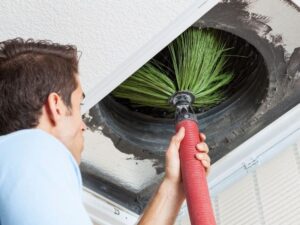A/C installation is not something to be left to amateurs. The technical aspects of the job, let alone the certifications required to handle the materials and the possible assist needed from an electrician or other professional combine to make the task both daunting for the do-it-yourselfer as well as possibly illegal. While homeowners in most jurisdictions have the option of performing as their own contractor, they cannot, for instance, legally purchase or handle R-22 without an EPA certification. This is just one obstacle to attempting an A/C install by oneself.
A professional HVAC contractor is aware of the pitfalls and primary considerations in approaching an installation. Taking the example of performing a “cut-in” for instance, has the existing ductwork been inspected? Does it leak, or is asbestos present? Without intimate knowledge of the latest materials and new techniques for handling them, an amateur is wasting both time and money. Any energy savings that could be realized over the long term by purchasing a more efficient system can be easily lost and then some by leaky or improperly designed and installed ducting.
AC Installation Augusta
Ductwork is only part of the problem. Does an amateur know how to handle copper tubing, which runs between the condenser and the air handler? Probably not. This copper is sold in rolls of specific diameters to meet specific applications. There are special tools made and sold just for handling these rolls. An amateur is unlikely to be able to install it without introducing cracks into the system, thereby making sure that a new installation is useless from the beginning. Additionally, routing this copper and braize welding elbows into it is not only a skilled task from the standpoint of physically handling the tools and material, there are calculations which must be performed to predict how the routing, length, and number of joins will affect pressure in the R-22 lines. A professional HVAC contractor not only knows how to perform these, he will be able to overcome specific difficulties presented by the structure to ensure that not only is the R-22 line up to code, it is optimal for your structure.
Setting and connecting the condenser also presents difficulties and considerations that simply are not likely to occur to the do-it-yourselfer. Electrical wiring is probably the simplest of these, believe it or not. Setting the condenser and connecting it to the rest of the system is an exercise which involves tools and equipment (suction pumps, for instance) which are specialized and in some cases very expensive to purchase. The lines must be tested for integrity, and then the coolant must be introduced in such a way as to not release R-22 into the atmosphere which, if it occurs and is reported by a nosy neighbor, will result in a fine of thousands of dollars. It’s a no win situation to attempt A/C installation by oneself.



